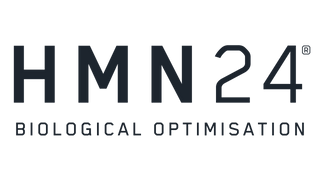For decades, research highlighted the benefits of flexible working schedules: higher productivity, reduced burnout, and improved wellbeing. Yet despite this evidence, many organisations clung to rigid, office-based models.
It took a global pandemic to change that.
When COVID-19 arrived, the element of choice disappeared. Millions of employees were suddenly forced into remote or hybrid models. What followed was the largest workplace experiment in modern history. And the results were undeniable: productivity didn’t collapse, in many cases, it improved.
The pandemic didn’t create the science. It simply forced the world to pay attention to it.
The Shift to Flexibility
Studies consistently show that autonomy in work scheduling reduces burnout and strengthens engagement. In healthcare, for example, greater control over working patterns has been linked to lower emotional exhaustion and higher satisfaction [1,2]. Similar findings have been reported across many other professions.
The science is clear: when people have the ability to align work with their natural rhythms, they perform better and recover faster. Flexibility supports psychological resilience, reduces stress, and enables individuals to integrate recovery into their day [3,4].
Why Did It Take a Pandemic?
The evidence had been available for years. But workplace culture is slow to change. Traditional models were deeply embedded, and leaders often feared productivity losses without physical oversight.
COVID forced an unprecedented real-time experiment. With no choice but to adapt, organisations discovered that work could thrive outside the traditional office. The lived experience validated what research had already made clear: flexibility is not a compromise; it is a performance multiplier [5,6].
Lessons for Organisations
The pandemic’s workplace trial leaves us with several key lessons:
-
Flexibility drives performance. It should be seen as a strategic lever, not a perk.
-
Perceived control matters. Flexibility must be genuine and employee-driven to have positive effects [7].
-
Culture must evolve. Structures that integrate recovery, wellbeing, and adaptability will outperform those that don’t.
Application to Everyday Life
For individuals, the lesson is equally clear: when you have autonomy, structure your work around your biology. Schedule demanding tasks during your natural peaks, create space for recovery during dips, and protect your evenings for rest.
This is where circadian alignment becomes critical. Flexible work isn’t only about location, it’s about timing, rhythm, and recovery. When these factors are respected, people achieve more while safeguarding their long-term health.
The Bigger Picture
COVID compressed a decade of workplace evolution into two years. It showed that rigid models are fragile, while flexible, adaptive structures are resilient.
The challenge now is to ensure the lessons aren’t forgotten. By embedding flexibility, aligning with circadian rhythms, and creating recovery-focused cultures, organisations can build sustainable, high-performing teams.
The science was always clear. The pandemic simply gave us the proof that could no longer be ignored.
References
-
McFarland, D. C., & Hlubocky, F. J. (2021). Workplace interventions to reduce burnout in healthcare workers: A systematic review. Current Oncology Reports, 23(6), 65.
-
Lee, H., & Chang, S. J. (2022). The effect of work flexibility on burnout and job satisfaction in nurses: A cross-sectional study. Journal of Nursing Management, 30(2), 283-292.
-
Yang, X., Chen, Z., & Xu, Z. (2024). Flexible work arrangements and mental health: Evidence from professionals during the COVID-19 pandemic. Frontiers in Psychology, 15, 145632.
-
Lyubarova, R., Dyrbye, L. N., et al. (2023). Flexible scheduling and burnout prevention: Organisational strategies for healthcare workers. Mayo Clinic Proceedings, 98(2), 345-357.
-
Ruiz, F. J., & Odriozola-González, P. (2017). The role of emotional flexibility in stress and burnout: A longitudinal study. Journal of Contextual Behavioral Science, 6(3), 340-346.
-
Laraja, M., et al. (2022). Workplace stress, flexibility, and employee outcomes: A meta-analysis. Journal of Occupational Health Psychology, 27(4), 512-529.
-
Yokoyama, M., et al. (2022). Perceived control of flexible work and employee health outcomes. International Journal of Environmental Research and Public Health, 19(18), 11248.
-
Sarabia-Cobo, C. M., et al. (2021). Psychological flexibility, acceptance, and burnout in nursing professionals. International Journal of Mental Health Nursing, 30(1), 220-229.
-
Mudallal, R. H., et al. (2017). Nurse burnout: The influence of workload and work conditions. Applied Nursing Research, 36, 132-138.
Blog posts
The Science Your Meeting Room Is Getting Wrong
Most meeting rooms are designed for convenience, not cognition. Rising carbon dioxide, poor ventilation and environmental load quietly shut down the human brain long before the meeting agenda does. This article breaks down the science and explains why performance starts with the air we breathe.
Gym Equipment Manufacturers, Gym Spaces, and Why They Need to Adapt
The fitness industry is undergoing its biggest transformation in decades. Gym equipment manufacturers can no longer rely on selling hardware alone — modern users demand outcomes, evidence, personalised systems, and environments that support real human performance. This article explores the data, science, and commercial forces driving this shift.
The Hidden Architecture of Sleep: Why Three Microclimates Determine How Well You Rest
You don’t sleep on a mattress, you sleep inside three thermal microclimates that sit between your body, your clothing and your bedding. These microclimates determine how quickly you fall asleep, how deeply you stay asleep and how well you recover. This piece explains the science, the technologies that improve it, and how to optimise your environment even without tech.







